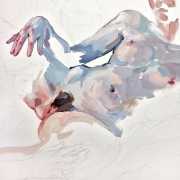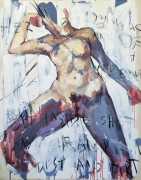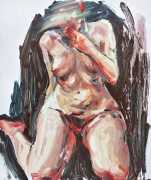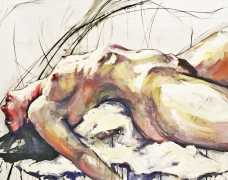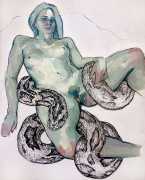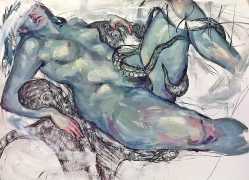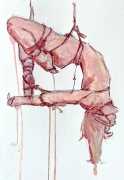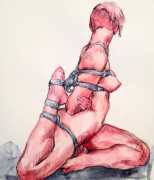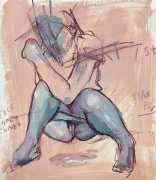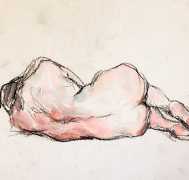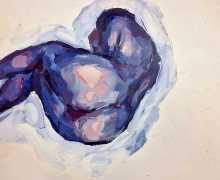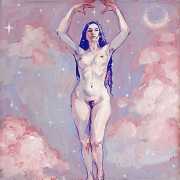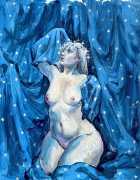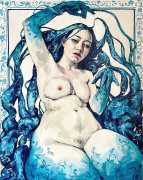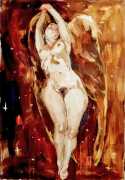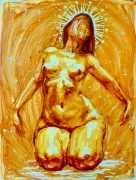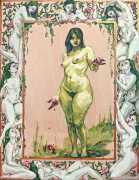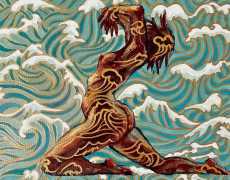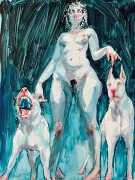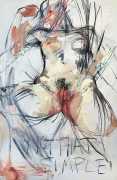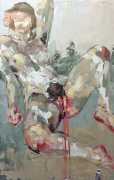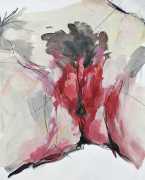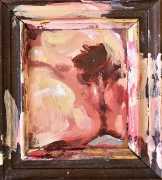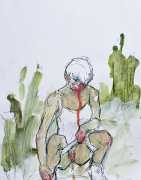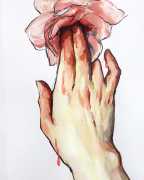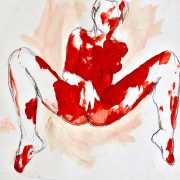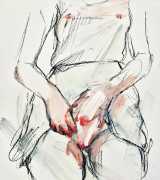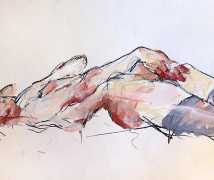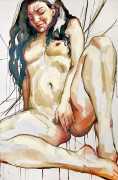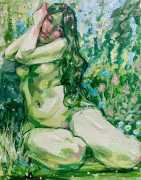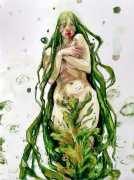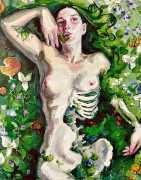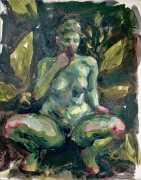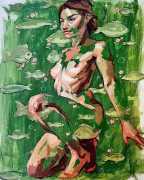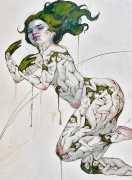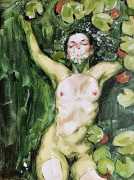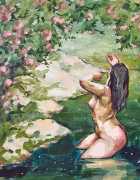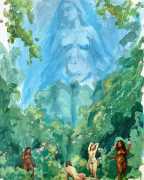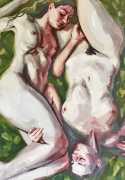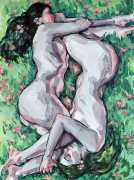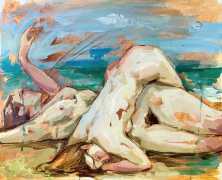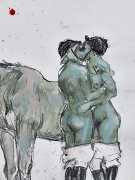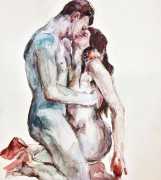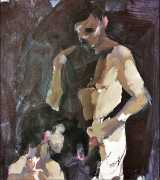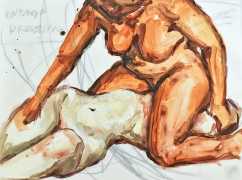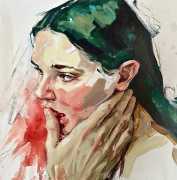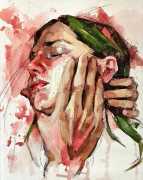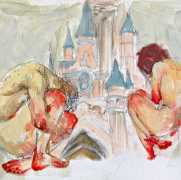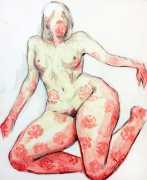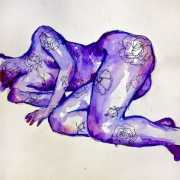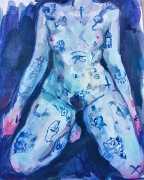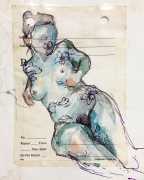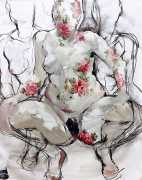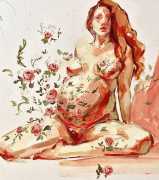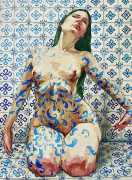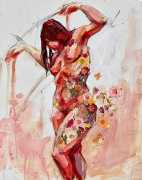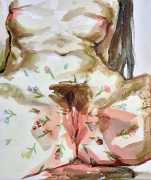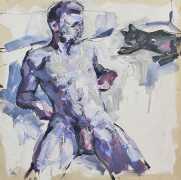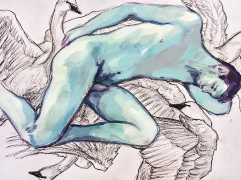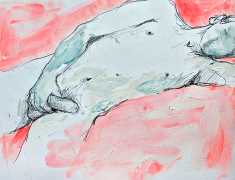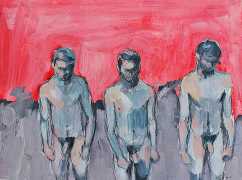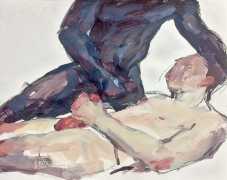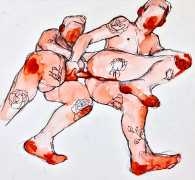Elly Smallwood's paintings are lushly-painted testaments to a uniquely personal vision. Here we show a selection of her work, from energetic quickly-created studies to her more complex paintings with flowers, patterns and lush greenery. At the end are some of her few paintings of men.
In 2016 Elly was interviewed by A.M. DeBrincat from Artfile magazine. You can see the whole interview here, but here are a few of the more interesting questions and replies:
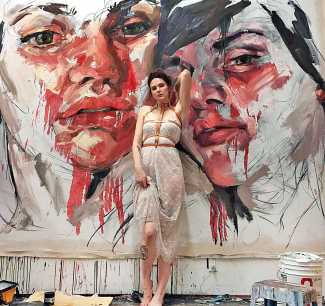 What themes and aesthetic concerns are important to your work?
What themes and aesthetic concerns are important to your work?
There are a number of themes that recur throughout my work, such as sexuality, intense emotion, alienation, but overall I try not to overthink it. I paint whatever it is that excites and fascinates me. My art is never a visual depiction of some carefully composed concept, it’s something more visceral and intuitive than that. I’m never able to explain the concept behind a piece because it isn’t something that I can comprehend through words, it’s an exploration of something through paint, which is a language in and of itself. I want my work to reach people on a gut level.
You paint on large canvases; is that important to you?
Personally I love working as large as possible, I think large pieces have an aggressive and dominant power; they command your attention. I occasionally work small as well though, and those pieces always have a very intimate and personal feel to them.
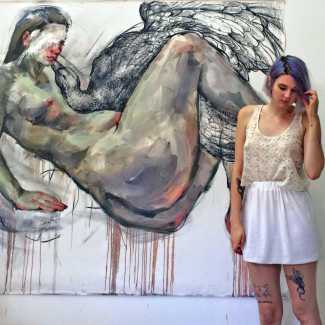 How do you build a painting? How has your process changed and evolved over time?
How do you build a painting? How has your process changed and evolved over time?
Originally it was all much more thought out, starting with photographs, then a sketch or two, then I would translate that sketch onto a larger canvas. Now I simply start right on the canvas with whatever idea is in my mind. I have a pretty short attention span, so I found that spending so long on the planning out of a piece didn’t work well for me, I would end up bored by the time I had started actually painting it. I’m also constantly trying to loosen up, make my work more spontaneous, rough and experimental, so I needed to cut out the planning out stage for that to happen. There’s a lot of failure now, but when pieces do work I like them a lot more.
How do you think social media has changed the artistic landscape and the way that contemporary artists develop their careers?
I think it’s put a lot more power into the hands of artists. You really don’t need the stamp of approval from institutions or galleries now to sell work, you can reach collectors directly. I think that’s great for young artists, particularly those whose work doesn’t get a lot of gallery attention. Social media also allows artists to reach out to each other and connect and build a community, which is an amazing thing, especially since we’re mostly awkward and introverted.



